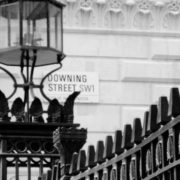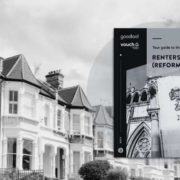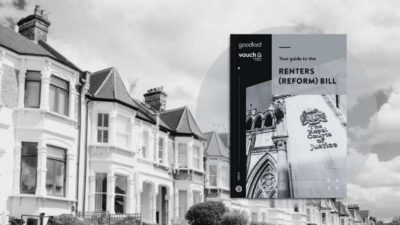UK house prices increased by 10.2% in the year to October 2021, down from 12.3% in September 2021.
On a non-seasonally adjusted basis, average house prices in the UK decreased by 1.1% between September and October 2021, compared with an increase of 0.8% during the same period a year earlier (September and October 2020).
House price growth was strongest in Wales where prices increased by 15.5% in the year to October 2021. The lowest annual growth was in London, where prices increased by 6.2% in the year to October 2021.
The Royal Institution of Chartered Surveyors’ (RICS) October 2021 UK Residential Market Survey reported buyer demand picking up slightly. The lack of available supply presents buyers with a limited choice and remains a key factor in strong house price growth.
The Bank of England’s Agents summary of business conditions 2021 Q3 reported ongoing strong demand for housing across most parts of the UK and a shortage of properties for sale, which pushed up prices.
The UK Property Transactions Statistics showed that in October 2021, on a seasonally adjusted basis, the estimated number of transactions of residential properties with a value of £40,000 or greater was 76,930.
This is 28.3% lower than a year ago. Between September and October 2021, UK transactions decreased by 52.0% on a seasonally adjusted basis, following a large increase in the month prior.
The Bank of England’s Money and Credit October 2021 release reported that mortgage approvals for house purchases (an indicator of future lending) in October 2021 was 67,200, which is down from 71,900 in September 2021.
England
In England the October data shows, on average, house prices have fallen by 1.5% since September 2021.
The annual price rise of 9.8% takes the average property value to £285,113.
The regional data for England indicates that:
- London experienced the greatest monthly rise with a movement of 1.9%
- the North East saw the lowest monthly price growth, with a fall of -4.8%
- the East Midlands experienced the greatest annual price rise, up by 11.7%
- London saw the lowest annual price growth, with a rise of 6.2%
Price change by region for England
| Region | Average price October 2021 | Annual change % since October 2020 | Monthly change % since September 2021 |
|---|---|---|---|
| East Midlands | £228,290 | 11.7 | -0.9 |
| East of England | £332,216 | 11.2 | -0.1 |
| London | £516,285 | 6.2 | 1.9 |
| North East | £147,719 | 9.7 | -4.8 |
| North West | £195,325 | 9.8 | -4.8 |
| South East | £366,883 | 10.3 | -0.7 |
| South West | £298,600 | 9.9 | -0.7 |
| West Midlands | £226,279 | 8.4 | -3.3 |
| Yorkshire and the Humber | £193,675 | 11.1 | -1.7 |
Repossession sales by volume for England
The lowest number of repossession sales in August 2021 was in the East of England.
The highest number of repossession sales in August 2021 was in the North West.
| Repossession sales | August 2021 |
|---|---|
| East Midlands | 3 |
| East of England | 1 |
| London | 8 |
| North East | 13 |
| North West | 28 |
| South East | 8 |
| South West | 5 |
| West Midlands | 8 |
| Yorkshire and the Humber | 8 |
| England | 82 |
Average price by property type for England
| Property type | October 2021 | October 2020 | Difference % |
|---|---|---|---|
| Detached | £452,675 | £397,882 | 13.8 |
| Semi-detached | £269,856 | £245,048 | 10.1 |
| Terraced | £229,815 | £212,253 | 8.3 |
| Flat/maisonette | £241,493 | £227,480 | 6.2 |
| All | £285,113 | £259,592 | 9.8 |
Funding and buyer status for England
| Transaction type | Average price October 2021 | Annual price change % since October 2020 | Monthly price change % since September 2021 |
|---|---|---|---|
| Cash | £268,476 | 9.9 | -1.4 |
| Mortgage | £293,553 | 9.8 | -1.6 |
| First-time buyer | £235,842 | 8.8 | -2.2 |
| Former owner occupier | £328,083 | 10.8 | -0.9 |
Building status for England
| Building status* | Average price August 2021 | Annual price change % since August 2020 | Monthly price change % since July 2021 |
|---|---|---|---|
| New build | £370,213 | 17.4 | 2.4 |
| Existing resold property | £273,140 | 8.3 | 3.8 |
London
London shows, on average, house prices have risen by 1.9% since September 2021.
An annual price rise of 6.2% takes the average property value to £516,285.
Average price by property type for London
| Property type | October 2021 | October 2020 | Difference % |
|---|---|---|---|
| Detached | £1,058,055 | £939,399 | 12.6 |
| Semi-detached | £660,278 | £605,395 | 9.1 |
| Terraced | £557,452 | £522,700 | 6.6 |
| Flat/maisonette | £434,260 | £415,993 | 4.4 |
| All | £516,285 | £486,212 | 6.2 |
Funding and buyer status for London
| Transaction type | Average price October 2021 | Annual price change % since October 2020 | Monthly price change % since September 2021 |
|---|---|---|---|
| Cash | £540,273 | 7.7 | 4.5 |
| Mortgage | £508,996 | 5.8 | 1.3 |
| First-time buyer | £444,592 | 5.2 | 1.5 |
| Former owner occupier | £595,364 | 7.6 | 2.4 |
Building status for London
| Building status* | Average price August 2021 | Annual price change % since August 2020 | Monthly price change % since July 2021 |
|---|---|---|---|
| New build | £551,630 | 10.4 | -3.4 |
| Existing resold property | £520,283 | 6.2 | 2.3 |
Wales
Wales shows, on average, house prices have risen by 2.6% since September 2021.
An annual price rise of 15.5% takes the average property value to £203,224.
There were 3 repossession sales for Wales in August 2021.
Average price by property type for Wales
| Property type | October 2021 | October 2020 | Difference % |
|---|---|---|---|
| Detached | £313,765 | £267,098 | 17.5 |
| Semi-detached | £196,266 | £170,351 | 15.2 |
| Terraced | £157,305 | £136,805 | 15 |
| Flat/maisonette | £131,682 | £118,512 | 11.1 |
| All | £203,224 | £175,948 | 15.5 |
Funding and buyer status for Wales
| Transaction type | Average price October 2021 | Annual price change % since October 2020 | Monthly price change % since September 2021 |
|---|---|---|---|
| Cash | £197,206 | 15.2 | 2.5 |
| Mortgage | £206,785 | 15.6 | 2.7 |
| First-time buyer | £174,302 | 14.9 | 2.2 |
| Former owner occupier | £237,414 | 16.2 | 3.1 |
Building status for Wales
| Building status* | Average price August 2021 | Annual price change % since August 2020 | Monthly price change % since July 2021 |
|---|---|---|---|
| New build | £274,062 | 20.2 | 2.8 |
| Existing resold property | £187,859 | 10.6 | 4.1 |
Tom Bill, head of UK residential research at Knight Frank commented:
“The UK housing market completely ignored the script and powered its way through the end of the stamp duty holiday and furlough scheme.
Gravity-defying price growth has been the result of low mortgage rates and tight supply, both of which we expect to reverse next year, increasing downwards pressure on prices.
For now, the UK housing market is at a fork in the road.
Interest rates may rise more slowly, demand for space could increase and rising supply may stutter if the Omicron variant proves to be more serious than the early anecdotal evidence suggests.
Equally, there may be a relief bounce if the impact of the new variant is less severe than feared, meaning transactions could rise as supply increases more quickly to catch up with demand.”
Managing Director of Barrows and Forrester, James Forrester, commented:
“A marginal decline following the final curtain of the stamp duty holiday was always on the cards but a one per cent monthly drop is far from the market collapse that many have been expecting.
The real proof in the pudding is the annual rate of appreciation and this is the third consecutive month where house prices have climbed by more than ten per cent year on year.
Based on the market trends seen following the initial stamp duty holiday deadline, we can expect house prices to bounce back on a monthly basis ahead of the Christmas break, as many push to complete before Santa comes to visit.”
Bective’s Head of Sales, Craig Tonkin, commented:
“While we’re now starting to see signs of the market cooling across some areas of the UK, London continues to build momentum with one of the strongest rates of monthly house price growth of all regions.
This has been driven by an influx of foreign interest at the top end of the market and we’re seeing larger family homes, in particular, go under offer at pace due to a severe shortage of supply.
With growing demand for London homes, the capital looks set to enjoy a sustained level of house price growth throughout the remainder of the year and well into 2022.”
Managing Director of Sirius Property Finance, Nicholas Christofi, commented:
“Although the end of the stamp duty holiday and a potential increase in interest rates is expected to cause a market slowdown early next year, we’re unlikely to see any notable reduction in buyer demand and therefore house price growth should remain steady, at the very least.
A potential interest rates increase will cause many buyers to pause for thought before transacting.
However, we’re already seeing measures to reduce this impact with the Bank of England removing the mortgage rates rise stress tests and a number of mortgage providers already starting to offer some very favourable deals.”





















Comments